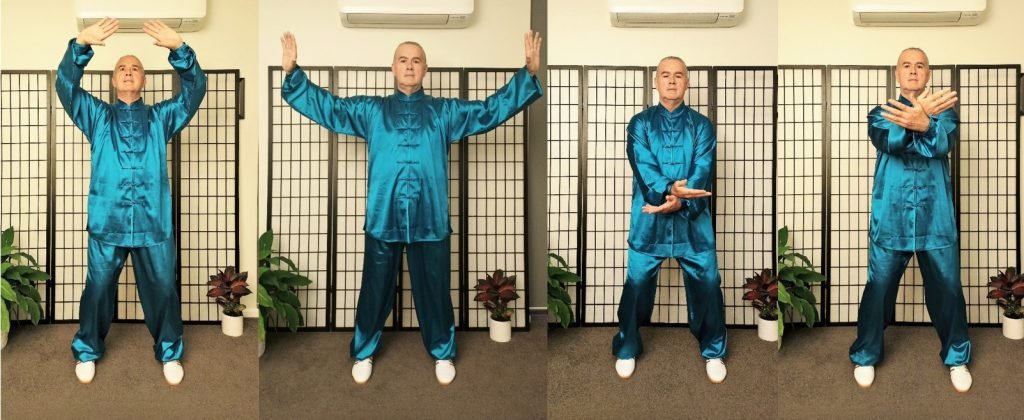
At the conclusion of paint the rainbow, we finish that movement with hands above and facing our head. We then proceed to turn the palms to face outward (as in the picture above). The head is tilted slightly up with the eyes looking between the hands. The hands are separated with the arms outward then drawn downward in arc on each side of the body. When the arms reach shoulder height we sink down with our knees. The hands finish with palms facing up and crossed at the wrists, knees bent. The crossed hands finish at Dantian level and from here are then drawn upward with arms extended as we breathe in and rising up with our knees. Once the hands are at face height the palms are turned outward and separated. Again the head slightly turned up and the eyes looking through the space between the hands. This is then all repeated, usually six times when doing the full set.
The benefits of this movement
The benefits of searching for clouds include relieving shoulder pain and boosting stamina. From a physiological perspective this makes complete sense. We are taking the shoulder joint through a large range of it’s movement. This mobilizes and strengthens the rotator cuff muscles. Moving the arms in this fashion in sync with breathing helps with lung capacity and your stamina.
The movement stimulates the kidney, benefits lungs and heart and thus improves the blood
circulation making it beneficial for chronic fatigue syndrome. It also improves and strengthens the stability of the lower body, waist and legs. This is definitely the case when done with a full squat as the originator of this form does. In our practice we do not do this to protect our knees and low back. However these benefits are still realized over time with the way we teach the form. Keep in mind there are many interpretations of the ShiBaShi. It is not a standardized Qigong like some of the health Qigong’s ; Ba Duan JIn and Yi Jin Jing.
From the traditional Chinese medicine perspective the heart and lungs are strengthened. This occurs because the Qi is flushed along the meridians of the arm during this movement. This particularly balances and strengthens the Heart, Lung and Pericardium meridians.
I trust this helps with your practice of this movement and gives some insight into the benefits that can be obtained.
Yours in Qigong
Sifu Peter